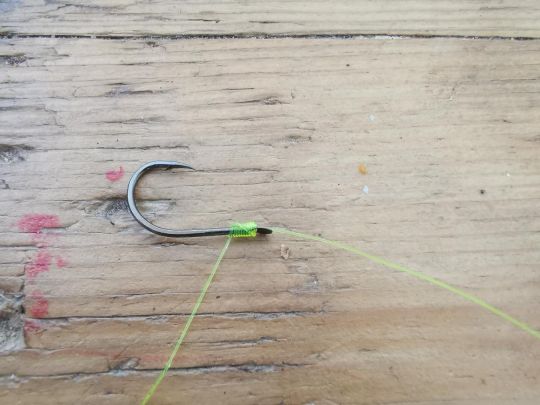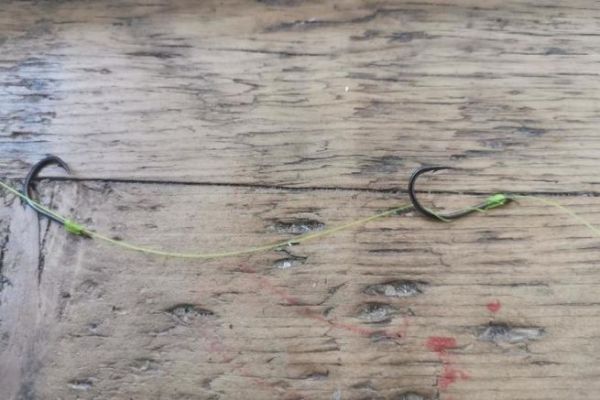The stewart rig consists of mounting two hooks (usually single) in line on your leader. The knots used are particularly simple, allowing you to present your bait perfectly and strategically set a hook on each end. Using long baits such as razor clams or certain worms undoubtedly brings a higher success rate when hooking.
Fussy sea breams
Sometimes the bream will take the bait and the bites are particularly strong. In this context, a bait, even a long one, with a single hook is sufficient to obtain a high success rate. However, this isn't always the case, and sometimes the bream will fuss and bite timidly. In this case, using a stewart rig with two exposed hook points will considerably increase your bite/catch ratio.
Clear spots
Two hooks mean more catches, but also twice the risk of snagging on the bottom. This is why the stewart rig should only be used on clear spots such as mudflats or beaches. In rocky areas, you'll spend too much time clinging to the bottom and redoing your rigs.
The first hook
For stewart mounting, you can use either paddle or eye hooks.
Tie the first hook on your leader, leaving a long length of excess line.
If there are several possible knots, you can use the following (for better visibility, this tutorial is made with fluorescent nylon):
- Pass the line through the eye of the hook and hold it along the shank.
- Make a loop.

- Then wind your thread in tight turns (10-12 turns), working your way up to the eyelet or pallet.

- Pass the thread through the loop.

- Moisten the knot with saliva and gradually tighten.
- If your hook is a paddle hook, make sure the wire is positioned in front of it.

The second hook
At the end of your excess line, repeat the previous operation with a second hook at the desired distance, which obviously corresponds to the length of your bait.
Cut off the excess thread and your assembly is ready to be dried.

Escher a knife
- To lure a knife with a stewart rig, open it carefully and then prick your two hooks into the flesh of the knife.

- Then close your knife, making sure to leave the hook tips sticking out.

- Finally, tie it securely with elastic thread so that it doesn't reopen.

Now you can cast and hope to catch a nice dorado!











